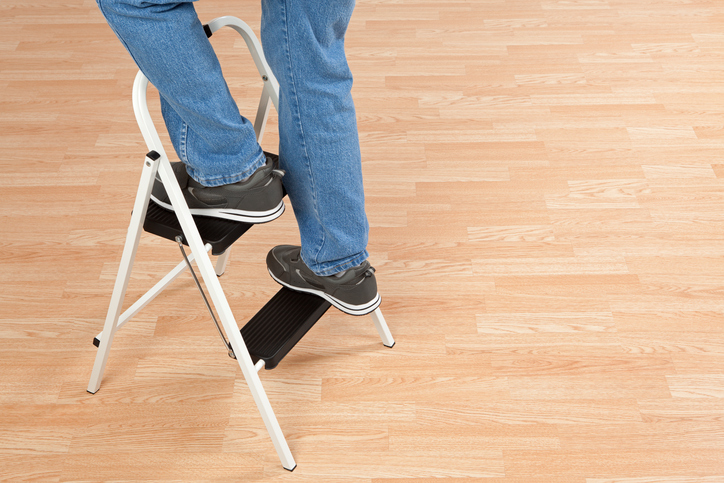The purpose of any ladder is double faceted. Ladders reach high places and points, but they also allow users to reach those places safely. In fact, ladder safety is at the forefront of ladder construction, maintenance, and use, and it should come in tandem with the actual operation of any ladder. However, with some ladders, height is not the main factor, but safety remains as important with ever. This is especially true with stepstools.
The American Ladder Institute (ALI) has published a new American National Standard dedicated to stepstools, ANSI ASC A14.11-2018: Safety Requirements for Stepstools. Ladders date back millennia, but stepstools are a little more recent. John H. Basely invented the stepladder in 1862, and the stepstool, which is often a smaller version of the stepladder, first emerged sometime after that.
According to ANSI ASC A14.11-2018, a stepstool is a “self-supporting portable climbing device,” noted for being “36 inches or less in height.” Therefore, these are the devices covered by the American National Standard.
Previously, wood, aluminum, and fiberglass ladder-type stepstools were covered by ANSI ASC A14.1, A14.2, and A14.5, respectively. These documents, like ANSI ASC A14.11-2018, were prepared under the ANSI Accredited Standards Committee on Safety, Construction, Care, and Use of Ladders, A14. However, recognizing the presence of a wide range of designs in the marketplace that do not fit the description of ladder-type stepstools, the A14.11 Stepstool sub-committee was formed. Their work led to the publication of the new ANSI ASC A14.11-2018 standard.
ANSI ASC A14.11-2018 details rules for the safe construction, design, testing, care, and use of wood, metal, plastic, and reinforced plastic stepstools of numerous configurations. It applies to 200, 225, 250, 300, and 375 lbs. duty ratings, and it can be used for stepstools that resemble conventional stepladders in their appearance and those that do not.
Since ANSI ASC A14.11-2018 covers material that was once addressed by other standards distinguished by the ladder material, it details a range of design guidelines for wood, plastic, and metal parts. Furthermore, since ANSI ASC A14.11-2018 was drawn largely from work that was conducted in the standards previously alluded to, it does not include additional tests to enable proper evaluation of non-ladder-type stepstools.
ANSI ASC A14.11-2018 does detail various tests that originated in other standards documents, such as those for compression, stepstool slip, top rail, cyclic loading, and elevated temperature. In addition to outlining general design and performance guidelines, the standard covers labeling, marking, and instruction for stepstools.
ANSI ASC A14.11-2018 is purposed with providing reasonable safety for life, limb, and property. The standard is intended to provide the manufacturer of applicable stepstools with performance and dimensional specifications by which a product can be compared, and it can also serve as the basis for instructions in personnel training and motivational/instructional material.
ANSI ASC A14.11-2018: Safety Requirements for Stepstools is available on the ANSI Webstore.
